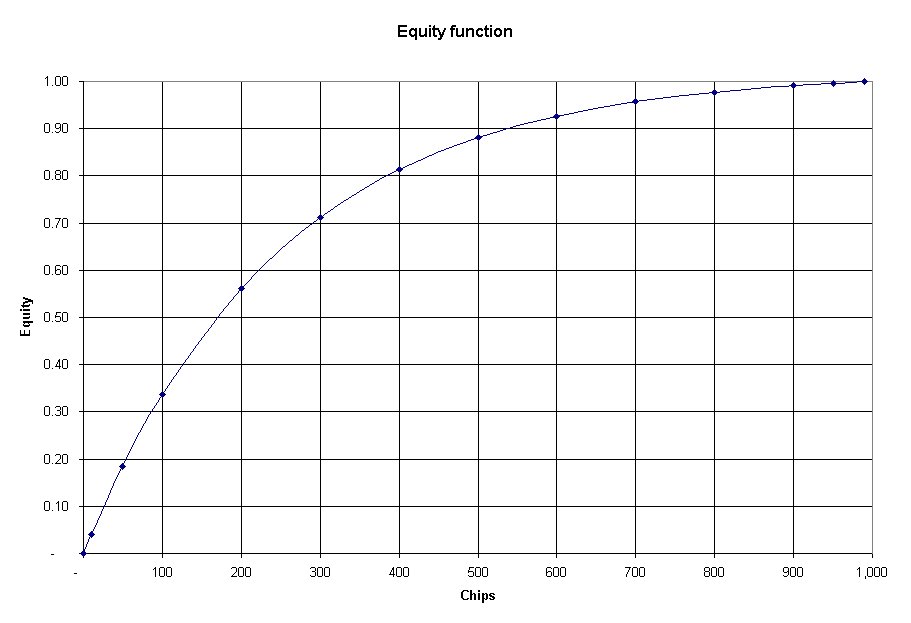I've given more thought to
gumpzilla's chart of an equity function where the hero is more skilled (or playing a better strategy) than the villian. Even though the artistry leaves a little to be desired [img]/images/graemlins/smile.gif[/img], I think gumpzilla's chart is a correct way of looking at it.
I approached the problem by using the
gambler's ruin formula. Here's the hypothetical -- hero and villian start with a stack of 500 chips apiece for a total of 1,000 in play. For each play, hero and villian bet $1 on the flip of a coin. If it comes up heads, hero wins $2. If it's tails, villian wins $2. Using that scenario, if we know hero's stack size, can we figure out his equity?
Now, if the coin is perfectly balanced, then the equity function is linear. The hero's equity equals his or her percentage of the chips in play.
But what if the coin just slightly favors the hero? I assumed that the coin was weighted so that it falls heads 50.1% of the time. Using the gambler's ruin formula, I then calculated the hero's equity for the following stack sizes:
Hero Equity
0 0.00
10 0.04
50 0.18
100 0.34
200 0.56
300 0.71
400 0.81
500 0.88
600 0.93
700 0.96
800 0.98
900 0.99
1000 1.00
Here's a chart of the equity function using these assumptions:

As you can tell, the two charts, using different assumptions, are both concave.
That means that gumpzilla's statement
[ QUOTE ]
Also interesting is that since f(A) + f(B) = 1, this means that B grows more slowly than linear for small stacks and faster than linear for big stacks (I think, correct me if I'm wrong here.)
[/ QUOTE ]
is correct. If the hero starts with a small stack, his equity grows fastest when he's short-stacked. For example, as the hero's stack grows from 100 to 200 chips, his equity grows from about 1/3 to over 1/2.
(Another interesting aspect of this chart is that a minor skill disparity of only 50.1% can have major effects when multiplied over 1000s of coin flips. That may illustrate why a push-or-fold strategy at high blinds may take away much of an opponent's skill advantage. If an unskilled player can force the tournament to come down to a single flip of a coin, he's more likely to win then if the tournament is decided by repeated coin flips at which a minor disadvantage is multiplied time and time again.)
Given that gumpzilla and
marv may have put to bed any debate about the shape of an equity function for equally matched players
each using an optimal strategy, I'm inclined to agree with gumpzilla's suggestion that developing an equity function for skill disparities may be more interesting.
The Shadow